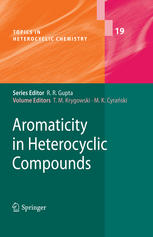

Most ebook files are in PDF format, so you can easily read them using various software such as Foxit Reader or directly on the Google Chrome browser.
Some ebook files are released by publishers in other formats such as .awz, .mobi, .epub, .fb2, etc. You may need to install specific software to read these formats on mobile/PC, such as Calibre.
Please read the tutorial at this link: https://ebookbell.com/faq
We offer FREE conversion to the popular formats you request; however, this may take some time. Therefore, right after payment, please email us, and we will try to provide the service as quickly as possible.
For some exceptional file formats or broken links (if any), please refrain from opening any disputes. Instead, email us first, and we will try to assist within a maximum of 6 hours.
EbookBell Team

4.3
18 reviewsAromaticity is a notion that appeared in the mid-nineteenth century to differentiate between unsaturated hydrocarbons and formally unsaturated benzene [1–3]. At the end of the nineteenth century it seemed that cyclicity was a necessary condition for differentiation between the two, but at the beginning of the twentieth century it turned out that the above assumption was not correct because cyclooctatetraene exhibited typical properties known for polyenes [4]. The essential property of b- zene-like compounds, often identified with aromatic compounds, was low react- ity. Hence thermodynamic stability was defined as resonance energy [5, 6] and was the first quantitative measure of aromaticity. Many theoretical approaches were proposed later to estimate this quantity, and now the criterion is often considered to be the most fundamental [7]. Almost at the same time, magnetic susceptibility was used to describe aromaticity [8, 9]. Consequently, many concepts based on mag- tism were developed, probably the most effective in assessment of aromaticity being nucleus independent chemical shift (NICS) [10] or Fowler’s maps of ring currents [11]. The criterion served Schleyer as a basis for a definition of aromat- ity: “Compounds which exhibit significantly exalted diamagnetic susceptibility are aromatic. Cyclic delocalisation may also result in bond length equalization, abn- mal chemical shifts and magnetic anisotropies, as well as chemical and physical properties which reflect energetic stabilisation”[12].